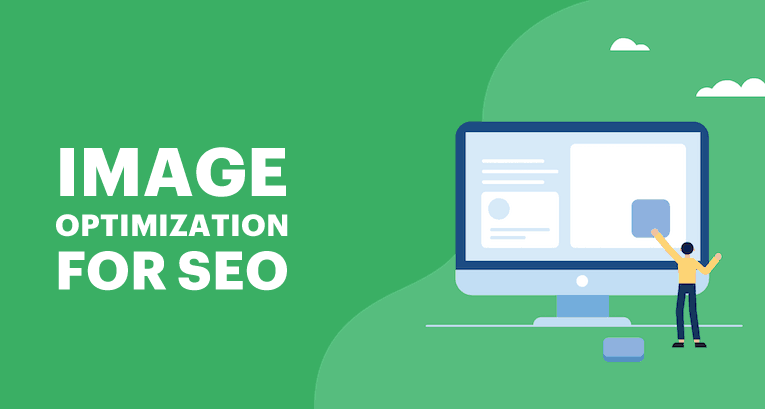Optimizing images for SEO is a critical step in improving your website’s performance. By optimizing images for SEO, you can enhance load times, boost search rankings, and provide a better user experience. This guide will walk you through the essential steps to ensure your images contribute to your SEO efforts.
1. Choose the Best Image File Format for SEO Optimization
Choosing the appropriate image file format is crucial for optimizing images. Each format has its strengths, so it’s important to understand which one works best for your needs:
- JPEG: This format is ideal for photographs and images with lots of colors. JPEGs compress well, reducing file size and improving load time.
- PNG: PNG is perfect for images that require transparency, such as logos. Although PNG files tend to be larger, they offer lossless compression, meaning they don’t sacrifice image quality.
- WebP: WebP is a newer format that offers high-quality images with smaller file sizes than both JPEG and PNG. It’s widely supported by modern browsers, making it a great choice for improving website performance.
By selecting the right file format, you can balance image quality and site speed, both of which are crucial for SEO.
2. Resize and Compress Your Images for Faster Load Times and SEO Benefits
Large images can significantly slow down your website, negatively affecting both SEO and user experience. Google’s Core Web Vitals prioritize fast page loading times, and image optimization plays a key role in this.
- Resize images: Before uploading images, resize them to match the display size. If the image appears at 500px wide, don’t upload a version that is 3000px wide. Large files will only slow down your site.
- Compress images: Compressing images reduces file size without losing much quality. Tools like TinyPNG, ImageOptim, and TinyJPG can help you compress images before uploading them. Smaller images will help your pages load faster.
3. Add Descriptive Alt Text to Images for Better SEO and Accessibility
Alt text (alternative text) serves two key purposes for SEO. It helps search engines understand the content of the image and improves accessibility for users with visual impairments.
When writing alt text:
- Be descriptive: Clearly describe the image, and avoid using generic phrases like “image1.”
- Incorporate keywords: Use relevant keywords related to the page’s content, but avoid keyword stuffing.
- Keep it concise: Aim for alt text that is under 125 characters.
For example, instead of using “image1.jpg,” use “seo-image-optimization-strategy.jpg” to provide search engines with a better understanding of the image content.
4. Use SEO-Friendly and Descriptive Image Filenames for Better Searchability
Along with alt text, the image filename helps search engines identify the image content. Avoid generic filenames like “IMG_1234.jpg.” Instead, use clear, descriptive filenames that incorporate relevant keywords.
For example:
- Instead of “IMG_1234.jpg,” use “seo-strategy-for-businesses.jpg.”
Descriptive filenames improve the image’s discoverability and contribute to your SEO efforts.
5. Create an Image Sitemap for Better Search Engine Indexing
An image sitemap is an XML file that lists all the images hosted on your website. Including images in your sitemap helps search engines crawl and index them more effectively. This improves your chances of ranking in image search results and boosts visibility.
If you’re using WordPress or another content management system (CMS), plugins can automatically generate an image sitemap for you.
6. Make Your Images Responsive for Mobile Optimization and SEO
With the rise of mobile traffic, it’s important to ensure that your images look good on all screen sizes. Responsive images adjust based on the device, providing the best user experience across desktops, tablets, and smartphones.
To implement responsive images, use the srcset attribute in the <img> tag. This allows the browser to choose the most appropriate image size based on the user’s screen resolution.
7. Enable Lazy Loading for Faster Page Speed and Improved SEO
Lazy loading is a technique that delays the loading of images until they are needed. Instead of loading all images when the page first loads, lazy loading ensures that images only load when the user scrolls down to them. This improves page load speed, which is crucial for both SEO and user experience.
You can implement lazy loading by adding the loading="lazy" attribute to your image tags.
8. Optimize Image Metadata to Reduce File Size and Enhance SEO
Images often contain metadata, such as EXIF data, which includes information about the camera settings, date, and location. While this data doesn’t affect SEO directly, removing unnecessary metadata can reduce file size and improve loading times.
You can use tools like Photoshop or ImageOptim to remove or edit metadata before uploading images.
9. Strategically Place Images Within Your Content for Better SEO Impact
The placement and context of your images affect their effectiveness for SEO. Ensure the images are relevant to the surrounding text content. If you’re discussing a product, blog post, or service, the image should enhance the content, not distract from it.
Additionally, placing images higher up on the page (above the fold) can improve engagement and potentially boost SEO, as they will be visible to users without scrolling.
10. Monitor Your Image Performance for Continuous SEO Improvement
After optimizing your images, regularly monitor their performance. Tools like Google PageSpeed Insights, Lighthouse, and GTmetrix can help you evaluate how well your images are loading and suggest further optimization.
Conclusion
Optimizing images for SEO is a vital aspect of website performance and user experience. By selecting the right file formats, resizing and compressing images, adding descriptive alt text and filenames, and utilizing techniques like lazy loading, you can enhance your site’s load times and search engine rankings.
Image optimization is not just about making your site faster; it’s about making it more accessible and engaging for users. This, in turn, can help you rank higher in search results. Start optimizing your images today and enjoy the benefits of better SEO and improved user experience.
If you want to use SEO Tools for better optimization visit our post : Best SEO Tools.

Leave a Reply